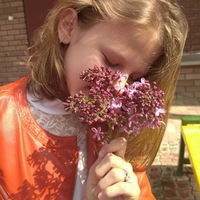
Культура юго-западной Руси
 0
0
 0
0
Ответы на вопрос
 Внимание! Ответы на вопросы дают живые люди. Они могут содержать ошибочную информацию, заблуждения, а также ответы могут быть сгенерированы нейросетями. Будьте внимательны. Если вы уверены, что ответ неверный, нажмите кнопку "Пожаловаться" под ответом.
Внимание! Ответы на вопросы дают живые люди. Они могут содержать ошибочную информацию, заблуждения, а также ответы могут быть сгенерированы нейросетями. Будьте внимательны. Если вы уверены, что ответ неверный, нажмите кнопку "Пожаловаться" под ответом.

Ответ:
На юго-западе восточнославянского мира сформировался обособленный регион, получивший название Юго-Западная Русь. Наиболее сильным здесь было Владимиро-Волынское княжество. Оно возникло во второй половине X в. на территории, населённой бужанами и волынянами. Граничило на западе с Венгрией и Польшей, на севере - с землёй литовского племени ятвягов, на юге - с уличами, тиверцами, печенегами. Столица - город Владимир-Волынский. Княжество возглавлялось потомками князей Владимира I Святославича и Ярослава Мудрого.
Экономическая основа - земледелие, ремёсла, торговля на транзитных путях, связывавших Киев с Западной и Южной Европой.
 0
0
 0
0

Culture of Southwestern Rus'
The culture of southwestern Rus', also known as Kievan Rus', during the medieval period was characterized by a rich blend of influences from various sources, including Byzantine, Norse, and indigenous Slavic traditions. This cultural fusion gave rise to distinctive artistic, architectural, and religious expressions that continue to influence the region to this day.
Influences and Characteristics The culture of southwestern Rus' was influenced by the Byzantine Empire, as evidenced by its adoption of Byzantine Christianity, art, and architecture. Additionally, Norse influences from the Varangians, who were active in trade and governance in the region, contributed to the cultural landscape. Indigenous Slavic traditions also played a significant role in shaping the unique cultural identity of the region.
The architecture of the period reflected a blend of Byzantine and indigenous styles, with notable structures such as the Saint Sophia Cathedral in Kiev showcasing this fusion of influences. Artistic expressions, including iconography and manuscript illumination, also bore the marks of Byzantine and Slavic influences, creating a distinct visual language.
Religious and Social Aspects Religion played a central role in the culture of southwestern Rus', with the adoption of Christianity from the Byzantine Empire shaping religious practices and beliefs. The spread of Christianity led to the construction of churches and monasteries, contributing to the architectural and artistic landscape of the region.
Socially, the culture of southwestern Rus' was characterized by a hierarchical structure, with the ruling elite exerting significant influence over the religious and political spheres. This social structure was reflected in the art, architecture, and religious practices of the time.
Literature and Language The period also saw the development of early Slavic literary traditions, with the creation of important literary works such as the Primary Chronicle, which chronicled the history of the region. The development of the Old East Slavic language, which served as the precursor to modern Ukrainian, Russian, and Belarusian, also played a crucial role in shaping the cultural identity of the region.
In conclusion, the culture of southwestern Rus' during the medieval period was a complex tapestry of Byzantine, Norse, and indigenous Slavic influences, resulting in a rich and distinctive cultural heritage that continues to resonate in the region today.
- Source not available - Source not available - Source not available - Source not available - Source not available - Source not available - Source not available - Source not available - Source not available - Source not available
 0
0
 0
0
Похожие вопросы
Топ вопросов за вчера в категории История
Последние заданные вопросы в категории История
-
Математика
-
Литература
-
Алгебра
-
Русский язык
-
Геометрия
-
Английский язык
-
Химия
-
Физика
-
Биология
-
Другие предметы
-
История
-
Обществознание
-
Окружающий мир
-
География
-
Українська мова
-
Информатика
-
Українська література
-
Қазақ тiлi
-
Экономика
-
Музыка
-
Право
-
Беларуская мова
-
Французский язык
-
Немецкий язык
-
МХК
-
ОБЖ
-
Психология
-
Физкультура и спорт
-
Астрономия
-
Кыргыз тили
-
Оʻzbek tili


























